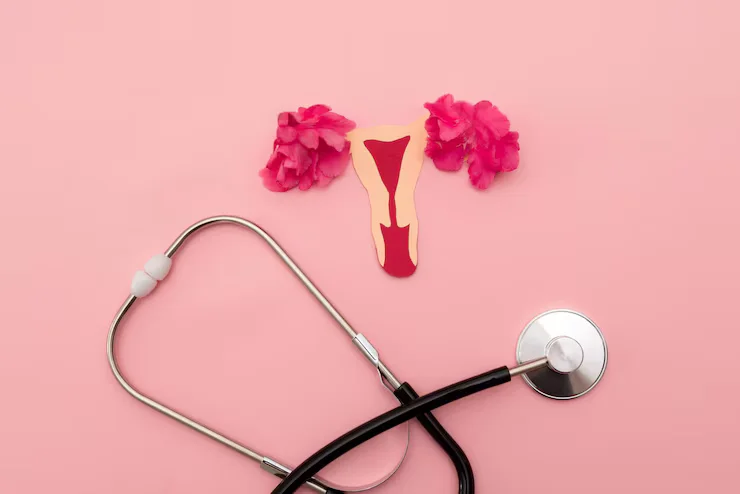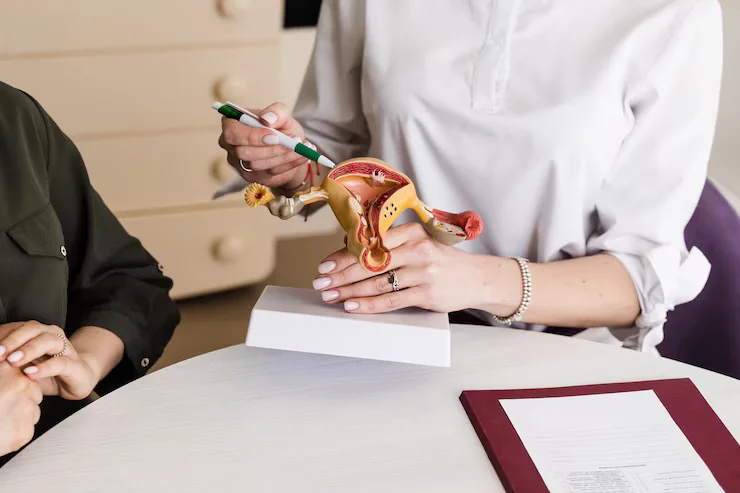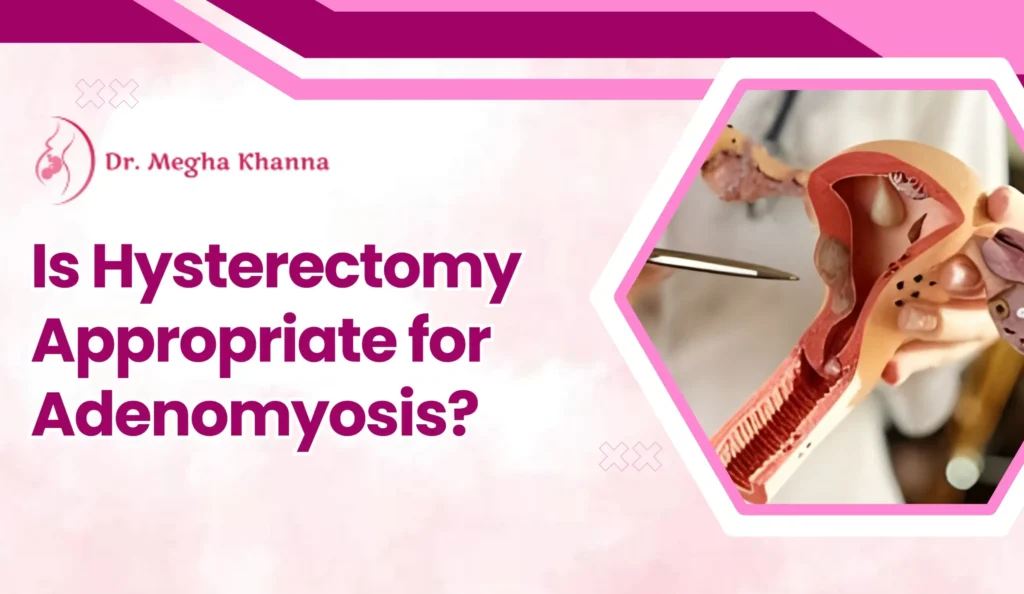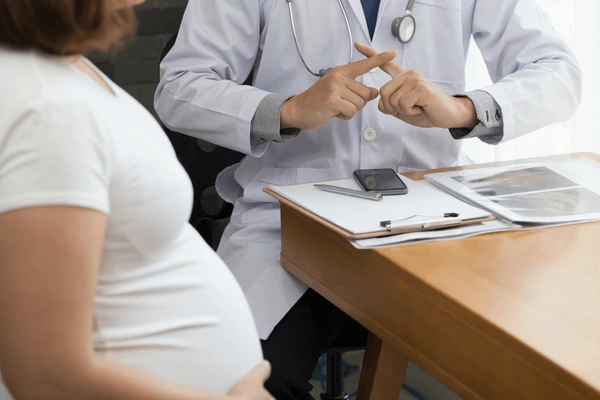-
Ganesh Talkies, Kolkata
Ganesh Talkies, Kolkata

Admins
09.01.2025
Recover after a vaginal hysterectomy with expert tips on pain management, nutrition, and emotional well-being. Learn how to ensure a smooth and quick recovery process from one of the best lady gynecologists. Essential Tips for Faster Vaginal Hysterectomy HealingWhat is a Vaginal Hysterectomy?Recovery Process After Vaginal Hysterectomy1. Immediate Post-Operative CareTips for Immediate Recovery:2. Pain Management and MedicationTips for Pain Relief:3. Rest and Gentle MovementWhat to Do:4. Gradual Return to Normal ActivitiesWhat to Avoid During Early Recovery:5. Diet and NutritionRecommended Foods:6. Pelvic Floor CareTips for Pelvic Floor Recovery:7. Emotional Health and Mental Well-beingTips for Emotional Recovery:8. Recognizing Complications9. Long-Term Care and MaintenanceLong-Term Recovery Tips:Frequently Asked Questions (FAQs)1. How long does it take to recover after a vaginal hysterectomy?2. When can I resume sexual activity after a vaginal hysterectomy?3. Is it normal to have vaginal discharge after surgery?4. What activities should I avoid after a vaginal hysterectomy?5. Can I exercise after a vaginal hysterectomy?Vaginal Hysterectomy Recovery: Tips for a Smooth Healing Process Essential Tips for Faster Vaginal Hysterectomy Healing A vaginal hysterectomy is a common procedure that many women undergo for various reasons, such as treating fibroids, endometriosis, or other reproductive health issues. While the procedure itself is relatively safe, the recovery process is an important part of your healing journey. To recover quickly after a vaginal hysterectomy, it’s essential to follow specific guidelines, manage your expectations, and be aware of the recovery stages. In this guide, will explain what to expect during the recovery period and provide helpful tips for managing pain, resuming normal activities, and ensuring a smooth recovery. If you are looking for reliable guidance from one of the best professional gynecologists, this article will help you get an overview of the necessary steps for a quicker recovery. What is a Vaginal Hysterectomy? A vaginal hysterectomy involves the removal of the uterus through the vaginal canal, leaving no visible incision on the abdomen. This procedure is preferred by many gynecologists because it generally results in less pain, a shorter hospital stay, and a quicker recovery compared to an abdominal hysterectomy. Recovery Process After Vaginal Hysterectomy Recovering from a vaginal hysterectomy is a gradual process. Most women can expect to return to normal activities in about six weeks, but full recovery may take up to three months. Here is a comprehensive guide to help you navigate through the recovery phase. 1. Immediate Post-Operative Care The first few days after your...

Admins
06.01.2025
Discover how modern treatments are revolutionizing Endometriosis Care. Learn about the latest options for managing this condition from one of the best gynecologists. New Advances in Treating Endometriosis for Better CareWhat is Endometriosis?Advances in Diagnostic MethodsKey Advancements in Diagnosis:Modern Treatment Approaches for EndometriosisMedications for Symptom ManagementHormonal TherapyTargeted TherapyMinimally Invasive Surgery for Endometriosis CareThe Role of Nutrition and Lifestyle ChangesDietary Changes:Lifestyle Adjustments:Endometriosis Care and FertilityFAQs About Endometriosis CareThe Future of Endometriosis Care New Advances in Treating Endometriosis for Better Care Endometriosis is a condition that affects millions of women worldwide. It occurs when tissue similar to the lining of the uterus grows outside of it, leading to painful symptoms that can severely affect daily life. Despite its prevalence, the understanding and treatment of endometriosis have evolved significantly over recent years, thanks to advancements in medical research and technology. In this post, we will explore how modern treatments are changing Endometriosis care, offering new hope to those affected. With improved diagnostic tools, more effective medications, and minimally invasive surgical techniques, managing endometriosis is now more accessible and manageable than ever before. What is Endometriosis? Endometriosis occurs when tissue, resembling the uterine lining, grows outside the uterus, typically on the ovaries, fallopian tubes, or the pelvic lining. This abnormal tissue growth can cause inflammation, scar tissue, and adhesions, leading to symptoms such as: Chronic pelvic pain Heavy menstrual bleeding Painful intercourse Infertility or difficulty conceiving Fatigue and digestive issues For many women, these symptoms can interfere with daily activities, making effective Endometriosis care essential to improving quality of life. Advances in Diagnostic Methods One of the significant changes in Endometriosis care is the improvement in diagnostic methods. In the past, diagnosing endometriosis often took years, as the symptoms could be mistaken for other conditions like irritable bowel syndrome (IBS) or pelvic inflammatory disease (PID). Today, however, modern diagnostic tools have made it easier to identify the condition accurately and quickly. Key Advancements in Diagnosis: Non-invasive imaging: Techniques like ultrasound and magnetic resonance imaging (MRI) are now more effective in detecting the presence of endometrial-like tissue outside the uterus. Laparoscopy: This minimally invasive procedure allows doctors to directly view the affected area and take tissue samples for a definitive diagnosis. These advancements have helped shorten the time between symptom onset and diagnosis, allowing women to begin their treatment journeys sooner. Modern Treatment Approaches for Endometriosis The treatment landscape for Endometriosis has changed dramatically in...

Admins
31.12.2024
Learn about the Procedure of Hysteroscopic Polypectomy, a minimally invasive treatment for uterine polyps, from the best lady gynecologist in Kolkata. Understanding the Procedure of Hysteroscopic PolypectomyWhat is Hysteroscopic Polypectomy?Why is the Procedure of Hysteroscopic Polypectomy Performed?The Steps Involved in the Procedure of Hysteroscopic PolypectomyPre-Procedure PreparationPerforming the ProcedureRecovery and AftercareBenefits of the Procedure of Hysteroscopic PolypectomyFAQs About the Procedure of Hysteroscopic Polypectomy1. Is the procedure painful?2. How long does the procedure take?3. Can polyps return after the procedure?4. How soon can I return to work after the procedure?5. Will I need any special care after the procedure?Embracing the Benefits of Hysteroscopic Polypectomy Understanding the Procedure of Hysteroscopic Polypectomy When it comes to women’s health, the importance of regular gynecological checkups cannot be overstated. Conditions such as uterine polyps can often go unnoticed due to their subtle symptoms. Uterine polyps are growths on the inner wall of the uterus, often linked to abnormal bleeding or infertility. Fortunately, modern medical techniques like the Procedure of Hysteroscopic Polypectomy have made the removal of these polyps much simpler and less invasive than traditional methods. In this post, we’ll take you through what you need to know about this procedure, how it’s performed, and why it’s a crucial step in maintaining your reproductive health. What is Hysteroscopic Polypectomy? Hysteroscopic polypectomy is a minimally invasive surgical procedure used to remove uterine polyps. The procedure involves using a small, flexible telescope-like instrument called a hysteroscope to view the inside of the uterus. The hysteroscope is inserted through the cervix, allowing the doctor to visualize and remove polyps without the need for large incisions. This procedure is usually performed under local or general anesthesia, depending on the complexity and patient preference. Why is the Procedure of Hysteroscopic Polypectomy Performed? Polyps in the uterus are generally benign (non-cancerous) growths, but they can still cause a variety of symptoms that impact a woman’s health and quality of life. The Procedure of Hysteroscopic Polypectomy is performed for several reasons: Abnormal Uterine Bleeding: Uterine polyps are a common cause of irregular or heavy bleeding between periods or after menopause. Polypectomy helps alleviate this symptom. Infertility: In some cases, polyps can interfere with conception or implantation. Removing the polyps may improve fertility. Preventive Care: Although rare, polyps can develop into cancer. Removing them is a preventive measure to ensure they do not cause further complications. Improved Quality of Life: Women experiencing heavy menstrual...

Admins
28.12.2024
Learn how to recover from hysteroscopic polypectomy with expert tips from one of the best lady gynecologists. Ensure a smooth healing process with our insights. Understanding Hysteroscopic Polypectomy Recovery: Key Tips & InsightsWhat is Hysteroscopic Polypectomy?What to Expect During Recovery from Hysteroscopic Polypectomy1. Immediate Post-Surgery Period2. Follow-up Appointments3. Return to Normal ActivitiesHow to Recover from Hysteroscopic Polypectomy: Essential Tips1. Rest and Take It Easy2. Manage Bleeding and Discharge3. Avoid Physically Involved Activities for a Few Weeks4. Pain Management5. Maintain a Healthy Diet and Hydration6. Gradual Return to Normal Activity7. Monitor for Any Signs of ComplicationsCommon Questions About Hysteroscopic Polypectomy RecoveryQ: How long will I experience bleeding after the procedure?Q: Can I try to conceive after a hysteroscopic polypectomy?Q: When can I return to work after the procedure?Q: Will I need any special care after the procedure?Effective Tips for a Smooth Recovery After Hysteroscopic Polypectomy Understanding Hysteroscopic Polypectomy Recovery: Key Tips & Insights Hysteroscopic polypectomy is a commonly performed surgical procedure designed to remove uterine polyps. These polyps are non-cancerous growths that develop in the lining of the uterus, and while they are typically benign, they can cause issues such as abnormal bleeding, infertility, or pelvic discomfort. Thankfully, hysteroscopic polypectomy offers a safe and effective solution to remove these polyps while minimizing the risk of complications. The good news is that recovery from hysteroscopic polypectomy is generally quick, especially when compared to more invasive surgeries. However, like any procedure, there are specific steps and tips that can help ensure a smooth and healthy recovery. In this article, we will explore how to recover from hysteroscopic polypectomy effectively, including what to expect during the recovery process, common recovery concerns, and actionable tips for optimizing your recovery journey. What is Hysteroscopic Polypectomy? Before we delve into the recovery process, it is important to understand the procedure itself. Hysteroscopic polypectomy is a minimally invasive surgical procedure performed using a hysteroscope, a thin, flexible tube with a camera and light attached. The procedure is carried out through the cervix, allowing the surgeon to visualize the inside of the uterus and remove any polyps present. This procedure is typically performed on women who experience symptoms caused by uterine polyps, such as abnormal bleeding or difficulty getting pregnant. Since it is minimally invasive, it does not require any major incisions, which generally leads to faster recovery and fewer complications compared to traditional open surgeries. What to Expect...

25.10.2025

13.10.2025